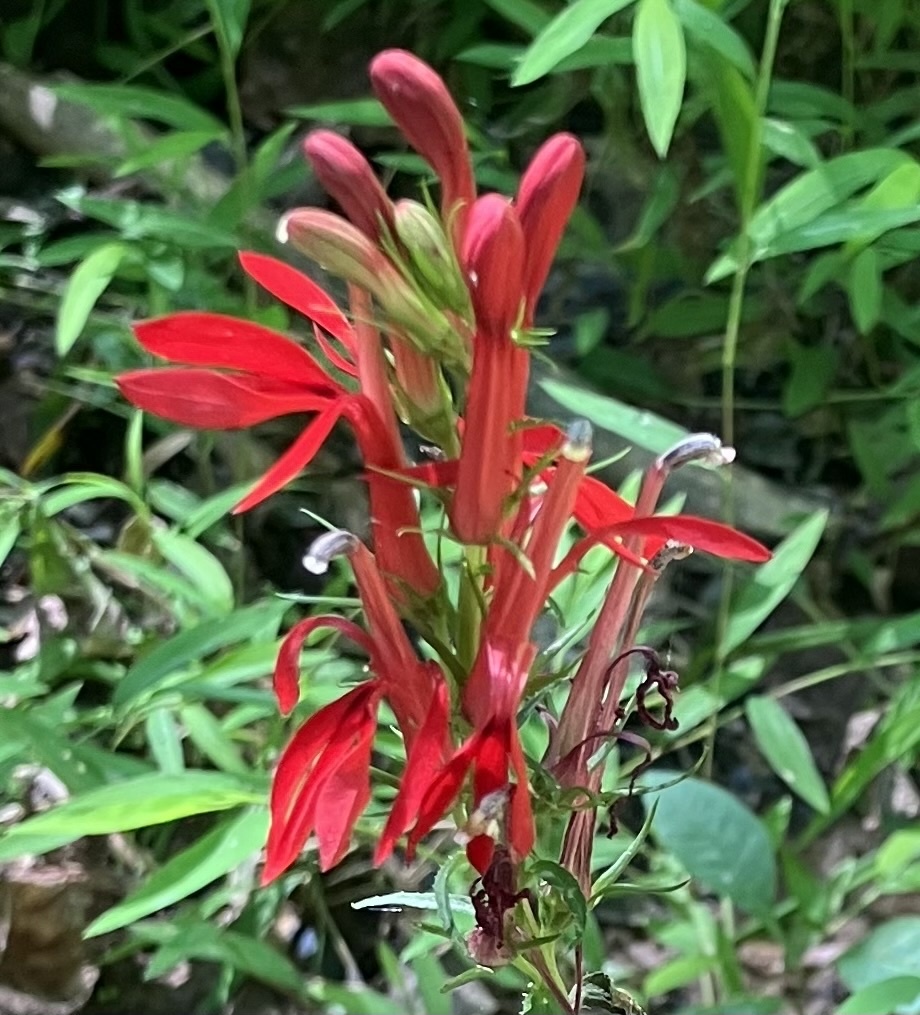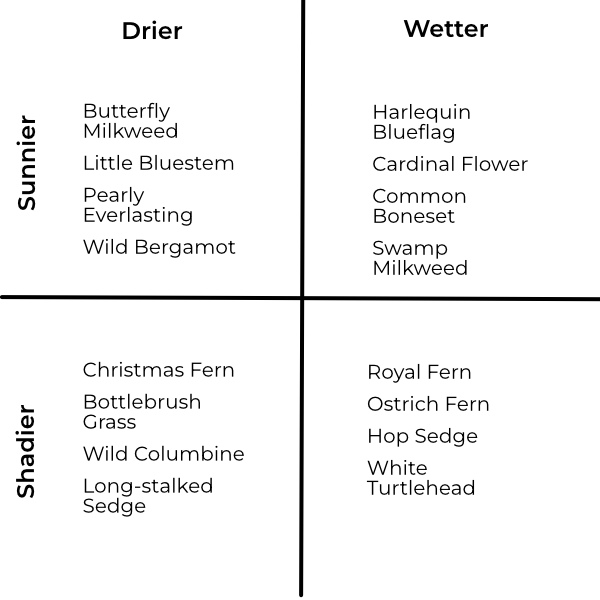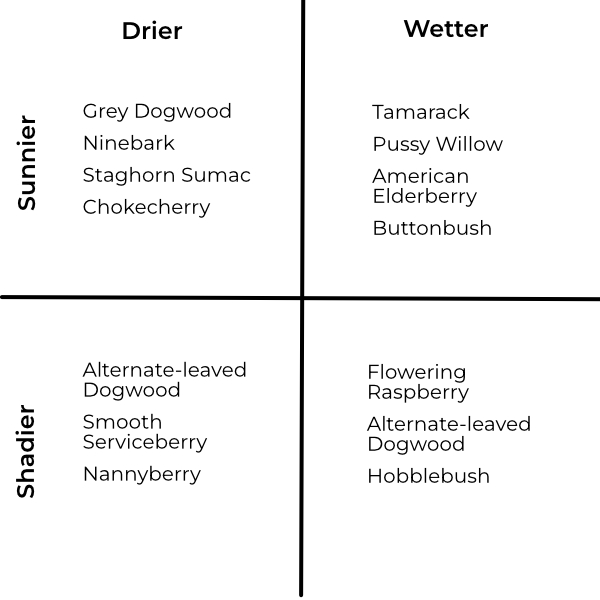
Native plants for challenging sites
I often get asked to advise on native plants for the more challenging sites: very dry, very wet – or when someone wants to create a screen or is having trouble with deer eating everything. Here are some ideas.
First, however, I need to put in a huge disclaimer. This is just a suggestion of plants. There is no guarantee they will be right for your location. Some of these plants might be too aggressive for your site, and some might need babying the first year. Others are more versatile, so while they night appear in one list, they might also work in various areas.
Nothing substitutes for understanding the plants and your site. That’s why it pays to do a lot of research or hire a specialist in native plants when planning your landscaping.
Each list is presented in a quadrant according to the site conditions or the growth habit of the plant.
When deer eat everything
It’s no secret that deer can be a problem in Haliburton County. Here are some plants that are more likely to be deer-resistant. However, if a deer is hungry enough (and the plant is tender enough), nothing is off the menu.
Most of the plants in this list are pretty reliable. The Christmas Fern might need some watering in the first year, if it’s too dry. The Cardinal Flower is short-lived, but with luck it will seed around. As a rule, grasses and sedges are good bets against browsing by deer.

When you want to create a screen
I often get asked for plants that will create a barrier – perhaps to add privacy or screen a shed or garage.
Here are some taller plants. Most are shrubs, but one or two are trees. Some of these plants create thickets, others provide screening by virtue of their height. Of course, plants take time to grow, so patience is required.
Be careful: some of these plants might not be suitable for a small site. For example, Staghorn Sumac is an aggressive spreader; Pussy Willow has aggressive roots so should not be planted near buildings or your septic.

When it’s shaded (or partly shaded)
We describe shaded conditions when the site gets less than three hours of sun per day. Part-shaded is three to six hours. Some of these plants are good in shade, some like a bit more sun. But all should be happy with some darker hours. Sometimes, it’s too shady for much to grow at all. Indeed, if you look at many of our forests, there is very little that survives the almost total shade generated by the canopy.

When it’s wet or moist
Some sites are water-logged. Others are wet but drain in drier conditions. Here are some plants that might suit these conditions.

When it’s dry
There are many plants happy with sunny, dry conditions. But dry, shady conditions are more challenging. Several of the plants on this list are easy-going – they are happy in a variety of conditions. Note: the Christmas Fern might need babying in dry conditions before it is established.

